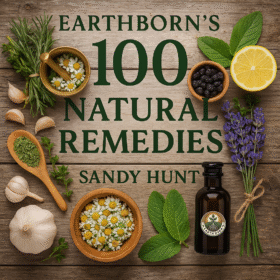
🌱 Intro
🌱 Introduction and History
Carolina Jessamine, also known as Yellow Jessamine or Woodbine, is a fast-growing evergreen vine celebrated for its trumpet-shaped golden yellow blooms and sweet fragrance. Native to the southeastern United States, it has long adorned fences, trellises, and wild woodland edges. Traditionally admired for both its beauty and occasional use in folk medicine, this plant is also the state flower of South Carolina.
💊 Medicinal Benefits
Historically, extracts from Carolina Jessamine were used by Native American and early herbal practitioners for their sedative, antispasmodic, and fever-reducing effects. Its primary alkaloids—gelsemine and gelseminine—can act on the central nervous system, but these compounds are highly toxic. Its internal use is extremely dangerous and is no longer recommended in herbal medicine without expert supervision.
📅 When to Plant in South Africa
Plant Carolina Jessamine in early spring (September to October) when the soil begins to warm. In frost-prone areas, delay planting until the risk of frost has passed.
🏡 Where to Plant
Choose a permanent location where the vine can climb—along fences, arbors, or trellises. It also works well in large containers with structural support, especially on patios or balconies with ample sunlight.
🌞 Soil, Water & Sunlight Requirements
✅ Soil
Well-draining, moderately fertile soil with a pH of 5.5 to 7.5. Add compost to enrich poor soils.
✅ Sunlight
Full sun to partial shade. More sunlight results in better flowering.
✅ Water
Water deeply once a week. During hot, dry spells, increase watering to keep soil evenly moist.
✅ Fertilize
Use a balanced slow-release fertilizer in spring. Avoid over-fertilizing, which may reduce blooms.
✅ Spacing
Space plants 30–60 cm apart. Allow plenty of vertical room to climb.
✅ Seeds Germinate
Seeds may take 4–6 weeks to germinate in warm, moist conditions. Scarifying seeds can improve success.
✅ Transplanting
Transplant once seedlings have at least two sets of true leaves and temperatures are stable.
✅ Maturity Height
Can reach 3–6 meters tall with support, forming a dense and elegant display of foliage and flowers.
🍓 Flowers & Fruit
Fragrant yellow trumpet-shaped flowers appear from late winter into spring, attracting bees and butterflies. The plant may produce small, dry capsule-like fruits, though flowering is the primary ornamental feature.
🌼 Companion Plants
Pair with clematis, honeysuckle, or climbing roses for visual appeal. It grows well alongside other fence-huggers but avoid planting with aggressive vines that may outcompete it.
🐛 Common Pests
Susceptible to aphids, spider mites, and scale insects. Control with neem oil or insecticidal soap, and encourage natural predators like ladybirds.
🧺 Harvesting
Due to its toxicity, Carolina Jessamine is not harvested for culinary or everyday herbal use. Leaves and flowers should only be collected by trained professionals for controlled medicinal study.
🫙 Storage
Not recommended for home herbal use or storage due to its poisonous nature. Keep all parts of the plant away from pets and children.
🧪 How to Use as Medicine
Modern herbalism strongly cautions against self-use. While its alkaloids once featured in pain and anxiety remedies, their toxic profile makes internal use highly risky. Only licensed professionals may utilize it under stringent conditions, typically in homeopathic doses.
🎉 Fun Fact
Carolina Jessamine is not just beautiful—it’s official! It has been South Carolina’s state flower since 1924 and symbolizes elegance, resilience, and the warmth of spring in southern gardens.
⚠️ Caution
All parts of this plant are highly toxic if ingested, causing paralysis, respiratory failure, or even death. Avoid use during pregnancy and never consume without professional medical oversight. Keep pets and children far from it.
📣 Let’s Grow Wisely
Carolina Jessamine is a breathtaking addition to your Earthborn garden, offering year-round greenery and springtime brilliance. But beauty comes with responsibility. Handle with care, admire from afar, and always put safety first when growing powerful plants.
#EarthbornGrower #PlantWithPurpose #ToxicPlants


 **Meet Sprout!** Sprout is your friendly gardening companion at Earthborn, always ready with helpful advice on plant care, medicinal herbs, and natural gardening solutions. From seedling to harvest, Sprout provides expert guidance to nurture your garden and your well-being—making gardening easy, fun, and naturally rewarding.
**Meet Sprout!** Sprout is your friendly gardening companion at Earthborn, always ready with helpful advice on plant care, medicinal herbs, and natural gardening solutions. From seedling to harvest, Sprout provides expert guidance to nurture your garden and your well-being—making gardening easy, fun, and naturally rewarding.
